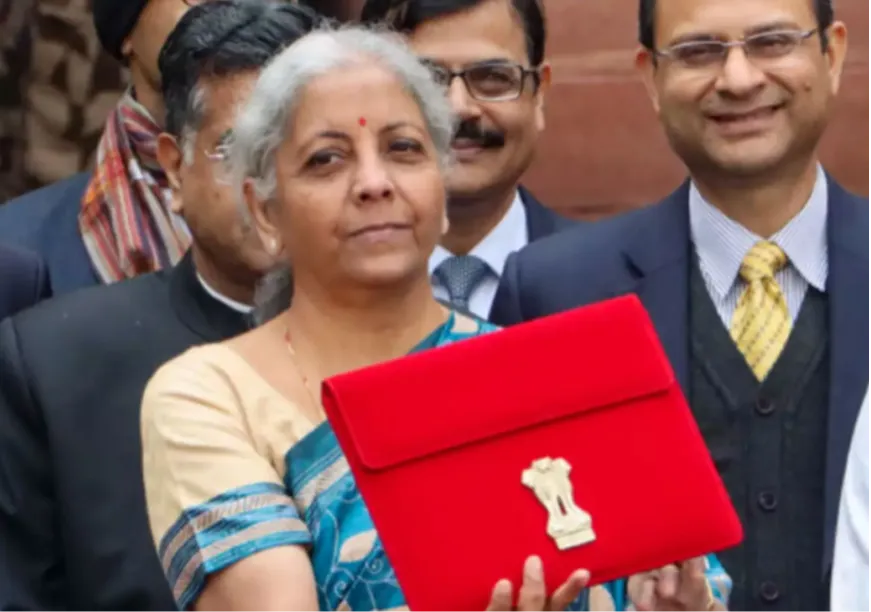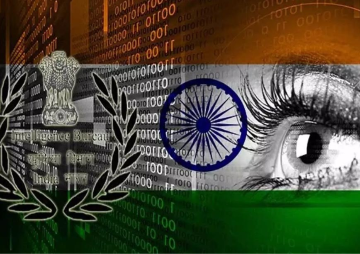
No new taxes. No rebates. No deductions or exemptions. No mega pre-election sops, no major vote-garnering schemes. Finance Minister Nirmala Sitharaman’s sixth budget was a cold recounting of the past decade and a warm glimpse into the future. But, above all, and in many ways, it underlined one political statement: The Prime Minister Narendra Modi government will be back in 2024.
What was the subject of light banter in TV studios in the pre-11:00 am slot became reality soon after. “In the full budget in July, our Government will present a detailed roadmap for our pursuit of ‘Viksit Bharat’,” FM Sitharaman said, a little more than four-fifths into her 5,257-word, 97-paragraph speech. Earlier, Modi had said similar words: “…we will bring a full Budget once the new government is formed.” The political confidence through its economic articulation is unambiguous.
“In the full budget in July, our Government will present a detailed roadmap for our pursuit of ‘Viksit Bharat’,” FM Sitharaman said, a little more than four-fifths into her 5,257-word, 97-paragraph speech.
For a government that has done much in its nine years and eight months of governance, and one you can’t accuse of under-communicating, this Interim Budget speech was surprisingly short, putting her in the fifth-longest spot, between then Finance Minister Jaswant Singh’s February 2004, 5,044-word speech and then Finance Minister Manmohan Singh’s February 1996, 6,002-word speech.
But the numbers that truly define the Interim Budget, a document that captures government finances, are four. First, corporate taxes budgeted for 2024-25 have increased by 13 percent to cross INR 10 lakh crore, and comprise 17 percent of the Budget, from 13 percent in 2021-22, and 15 percent each in the subsequent two years. Even better, income tax receipts for Budget 2024 have increased, again by 13 percent, and at INR 11.6 lakh crore comprise 19 percent of the budget—this is a big 4 percentage point jump from the previous year. Together, at 36 percent compared to 30 percent last year, these two numbers show how the share of direct taxes is rising in Budget 2024. Third, revenues from the goods and services tax (GST) have increased to 18 percent of the budget, crossing INR 10 lakh crore.
Taken together, the share of the three—corporate tax, income tax and GST—has jumped by 7 percentage points. But what, then, has reduced? Borrowings. From 34 percent of the budget, government debt is down to 28 percent. This fall of almost INR 50,000 crore will reduce the pressure on inflation caused by government borrowings. The implications of this are positive. Time this fall with the expectations of private capital investments increasing and what you have is a lower interest rate regime following a reduced inflation rate within the next two quarters.
Further, the fiscal deficit is on the downward path, and as FM Sitharaman had promised in Budget 2022, is heading towards 4.5 percent. It stands at 5.1 percent in Budget 2024, down from 5.8 percent in Budget 2023, with a fall of almost INR 50,000 crore. Likewise, revenue deficit is down to 2 percent, falling a spectacular 22 percent, from INR 8.4 lakh crore to INR 6.5 lakh crore.
Time this fall with the expectations of private capital investments increasing and what you have is a lower interest rate regime following a reduced inflation rate within the next two quarters.
In Budget 2023, FM Sitharaman had budgeted INR 10 lakh crore for capital investment, triple of what it was in 2019-20. In Budget 2024, she has not eased the accelerator. The outlay for capital expenditure has been raised by 11.1 percent to INR 11,11,111 crore (3.4 percent of GDP), about half the size of the economy of Finland. As in the past, this will continue to drive and magnify the India growth story.
The Four Pillars of Budget and Elections 2024
But good economics stories don’t always translate into good political stories. Voters need to be repeatedly persuaded to retain power. Thus, Garib (Poor), Mahilayen (Women), Yuva (Youth) and Annadata (Farmer) become the four pillars of Budget 2024—and of Elections 2024.
For the poor, direct benefit transfers of INR 34 lakh crore (that’s more than the GDP of Switzerland). For women, 300 million Mudra Yojana loans, higher female enrolment in higher education with women comprising 43 percent of STEM courses, one-third seats in the Lok Sabha and State legislative assemblies reserved for women, and 70 per cent houses under PM Awas Yojana in rural areas being given to women as sole or joint owners.
For the youth, the National Education Policy 2020 launched, 14 million young trained, several higher education institutions set up, and 430 million loans worth INR 22 lakh crore (more than the GDP of Ireland) disbursed. And for farmers, crop insurance to 40 million farmers, and the Electronic National Agriculture Market that has integrated 1,361 mandis, providing services to 18 million farmers.
For the youth, the National Education Policy 2020 launched, 14 million young trained, several higher education institutions set up, and 430 million loans worth INR 22 lakh crore (more than the GDP of Ireland) disbursed.
FM Sitharaman had some direct messages for voters by talking about the previous UPA government. She talked about “the responsibility to mend the economy step by step” from their inheritance in 2014. That being overcome, “It is now appropriate to look at where we were then till 2014 and where we are now, only for the purpose of drawing lessons from the mismanagement of those years. The Government will lay a White Paper on table of the House.” During this period, India has moved from being in the ‘Fragile Five’ list the Top Five list, and from UPA to NDA, so the paper is likely to be as economic as it is political.
In tune with its ease of living and doing business, Budget 2024 proposes to withdraw all outstanding direct tax demands of up to INR 25,000 till FY 2010, and up to INR 10,000 for FY 2011 to 2015. Although the amount may not be much, it will reduce the pressure on businesses and individuals facing these “petty, non-verified, non-reconciled or disputed direct tax demands, many of them dating as far back as the year 1962, which continue to remain on the books.” A confidence-inspiring move.
Finally, the vision of a Viksit Bharat through Amrit Kaal, when India would be a developed economy, finds a place as the economic vision and political slogan. From Prime Minister Lal Bahadur Shastri’s ‘Jai Jawan Jai Kisan’ to Prime Minister Atal Bihari Vajpayee’s ‘Jai Jawan Jai Kisan Jai Vigyan’, Prime Minister Modi, Sitharaman said, “has furthered that to ‘Jai Jawan Jai Kisan Jai Vigyan and Jai Anusandhan’, as innovation is the foundation of development.”
The vision of a Viksit Bharat through Amrit Kaal, when India would be a developed economy, finds a place as the economic vision and political slogan.
Looking beyond the slogans and numbers, Sitharaman’s Budget 2024 is not a loudspeaker roaring about India’s political economy. It is a gentle set of earpods that gives voters a balanced recounting of the economic past and powers a confident political future. In other words, it is a budget where the Modi government is saying: “I’ll be back!”
Gautam Chikermane is Vice President at the Observer Research Foundation
The views expressed above belong to the author(s). ORF research and analyses now available on Telegram! Click here to access our curated content — blogs, longforms and interviews.




 PREV
PREV


